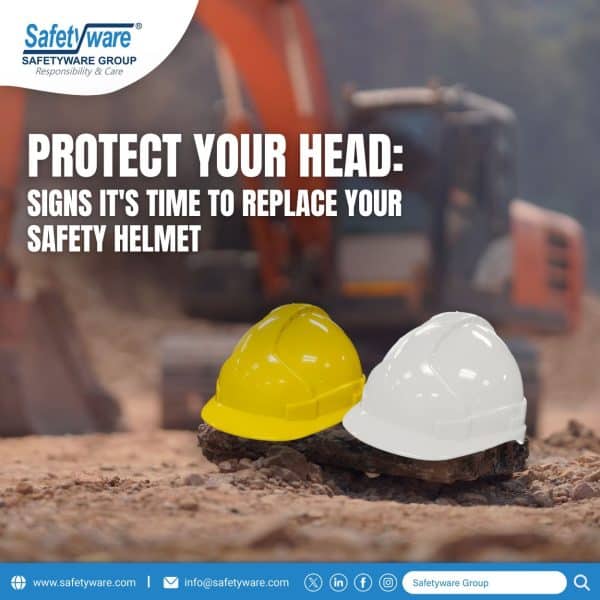Safety Knowledge
Protect Your Head: Signs It’s Time to Replace Your Safety Helmet
Safety helmets are essential personal protective equipment (PPE) designed to protect workers from head injuries in hazardous work environments, such as construction sites, industrial facilities, and manufacturing plants. Over time, safety helmets can deteriorate due to wear and tear, exposure to environmental factors, or damage, compromising their ability to provide adequate protection. In this blog post, we will discuss the importance of knowing when to replace your safety helmet and highlight key signs to watch for to ensure the safety and well-being of workers.
The Importance of a Well-Maintained Safety Helmet:
Safety helmets play a critical role in safeguarding workers from head injuries caused by falling objects, impacts, or electrical hazards. Regular inspection, maintenance, and timely replacement of safety helmets are essential to ensure their effectiveness in protecting against head injuries and maintaining a safe work environment. By recognizing the signs that indicate it’s time to replace your safety helmet, employers and workers can mitigate the risks associated with head injuries and prioritize workplace safety.
Signs That It’s Time to Replace Your Safety Helmet:
- Visible Damage: Inspect your safety helmet regularly for visible signs of damage, such as cracks, dents, punctures, or deformities. Any visible damage compromises the structural integrity of the helmet and reduces its ability to absorb impact forces effectively. If you notice any visible damage, replace the helmet immediately to ensure proper protection for the wearer.
- Faded or Peeling Shell: The outer shell of a safety helmet may fade or peel over time due to exposure to sunlight, chemicals, or harsh environmental conditions. Faded or peeling shell indicates deterioration of the helmet material, which can weaken its protective properties and compromise its ability to withstand impacts. Replace helmets with a faded or peeling shell to maintain their durability and protective function.
- Loose or Damaged Suspension System: The suspension system inside the safety helmet plays a crucial role in providing a secure and comfortable fit for the wearer. Inspect the suspension system for signs of wear, tear, looseness, or damage, such as frayed straps or broken components. A compromised suspension system can affect the stability and fit of the helmet, increasing the risk of head injuries. Replace helmets with a damaged suspension system to ensure proper protection and comfort.
- Expired Service Life: Safety helmets have a recommended service life specified by the manufacturer, indicating the period during which the helmet is expected to provide optimal protection. It is important to adhere to the expiration date or service life of the helmet and replace it when it has reached the end of its recommended lifespan. Using a helmet beyond its service life can compromise its safety performance and put the wearer at risk.
- Impact or Accident: If a safety helmet has been subjected to a significant impact or involved in an accident, it should be replaced immediately, even if no visible damage is apparent. Helmets that have experienced a severe impact may have internal damage that is not visible externally, compromising their ability to protect against future impacts. It is crucial to replace helmets after any impact or accident to ensure the safety of the wearer.
- Uncomfortable Fit or Wear: A safety helmet that no longer fits properly or feels uncomfortable to wear may indicate the need for replacement. An ill-fitting helmet can shift or come off during work activities, reducing its effectiveness in protecting against head injuries. Ensure that the helmet provides a snug and secure fit for the wearer to maximize its protective capabilities.
In conclusion, knowing when to replace your safety helmet is essential for maintaining a safe and secure work environment and protecting workers from head injuries. By recognizing the signs of visible damage, faded shell, damaged suspension system, expired service life, impact or accident, and uncomfortable fit, employers and workers can ensure that their safety helmets remain effective in providing protection against hazards. Regular inspection, proper maintenance, and timely replacement of safety helmets are key practices to uphold workplace safety standards and prioritize the well-being of workers. By proactively replacing safety helmets when necessary, organizations can mitigate the risks associated with head injuries and promote a culture of safety in the workplace. Protecting your head with a well-maintained and properly replaced safety helmet is a proactive measure that contributes to a safer and healthier work environment for all.
explore more about Head Protection

